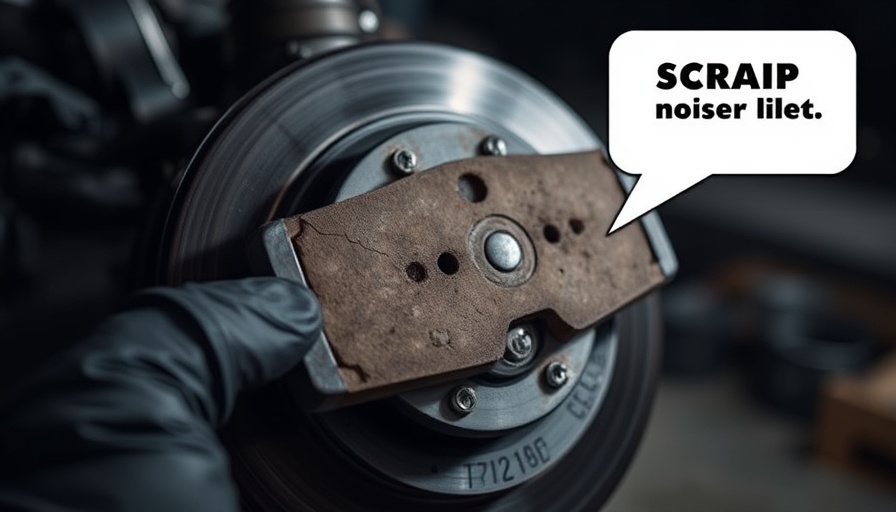
Understanding Common Brake Noises
If you've ever heard a loud noise while braking, particularly a scraping or grinding sound, you might be facing a serious issue. Such noises often indicate that the brake pads are worn down to the metal components, which not only compromises safety but can also lead to costly repairs. Learning about these noises can help you identify problems before they worsen.
In Loud Noise While Braking in Your Car or Truck? What Other Brake Problems Could It Be Hiding?, the discussion dives into the importance of brake system inspection, exploring key insights that sparked deeper analysis on our end.
Why Brakes Fail Prematurely
In the video titled Loud Noise While Braking in Your Car or Truck? What Other Brake Problems Could It Be Hiding?, a mechanic identifies a situation involving metal-on-metal contact between the brake pads and the rotor. This can occur for various reasons, such as delayed maintenance, where brake pads are not replaced in time, or mechanical failures. For instance, uneven wear can suggest that your vehicle's braking system is not functioning adequately, leading one side to overwork while the other remains underutilized.
Identifying Brake Issues Through Inspection
Routine inspection of your brakes can reveal potential problems. After removing the wheel, it becomes evident whether the brake pads and rotors are worn out. Signs of corrosion, uneven wear, and a rotors' surface quality are indicators to watch out for. If the rotors appear grooved or uneven, it usually means further inspection is necessary, potentially highlighting issues with the caliper or brake hoses.
Understanding the Brake System's Components
It’s essential to understand how each component of the brake system works. Brake pads press against the rotors to create friction that slows the vehicle down. Problems with the calipers, which hold the brake pads in place, can lead to operational failures. For instance, when a caliper piston is stuck, it can cause one wheel to brake harder than the other, leading to rapid wear on specific components.
Signs Your Brake System Needs Attention
Feeling unsure about your brakes? Here are some signs that indicate it might be time for a check-up:
- Unusual noises: Grinding, squeaking, or heavy scraping noises when braking.
- Pulsating brake pedal: This could indicate warped rotors caused by overheating.
- Warning lights: Dashboard indicators that signal brake system issues.
Next Steps for Vehicle Safety
Once you identify issues within the brake system, addressing them promptly is crucial. Components like calipers or hoses may need replacement to ensure balanced braking. To refresh the entire system, consider obtaining brake kits, which can make replacements more manageable. Remember, safe stopping is paramount to driving.
How to Maintain Your Brakes
Regular brake maintenance can extend the life of your brakes significantly. Here are some tips to keep your brakes in tip-top shape:
- Have your brake system checked regularly, especially before long trips.
- Pay attention to odd noises when braking and address them immediately.
- Look out for warning lights on your dashboard.
- Keep an eye on the thickness of your brake pads during regular vehicle checks.
In light of the information presented, consistently monitoring your vehicle’s braking system can prevent severe issues, keeping you and others safe on the road. The importance of functioning brakes cannot be overstated, given their direct impact on vehicle safety.
 Add Row
Add Row  Add
Add 




Write A Comment